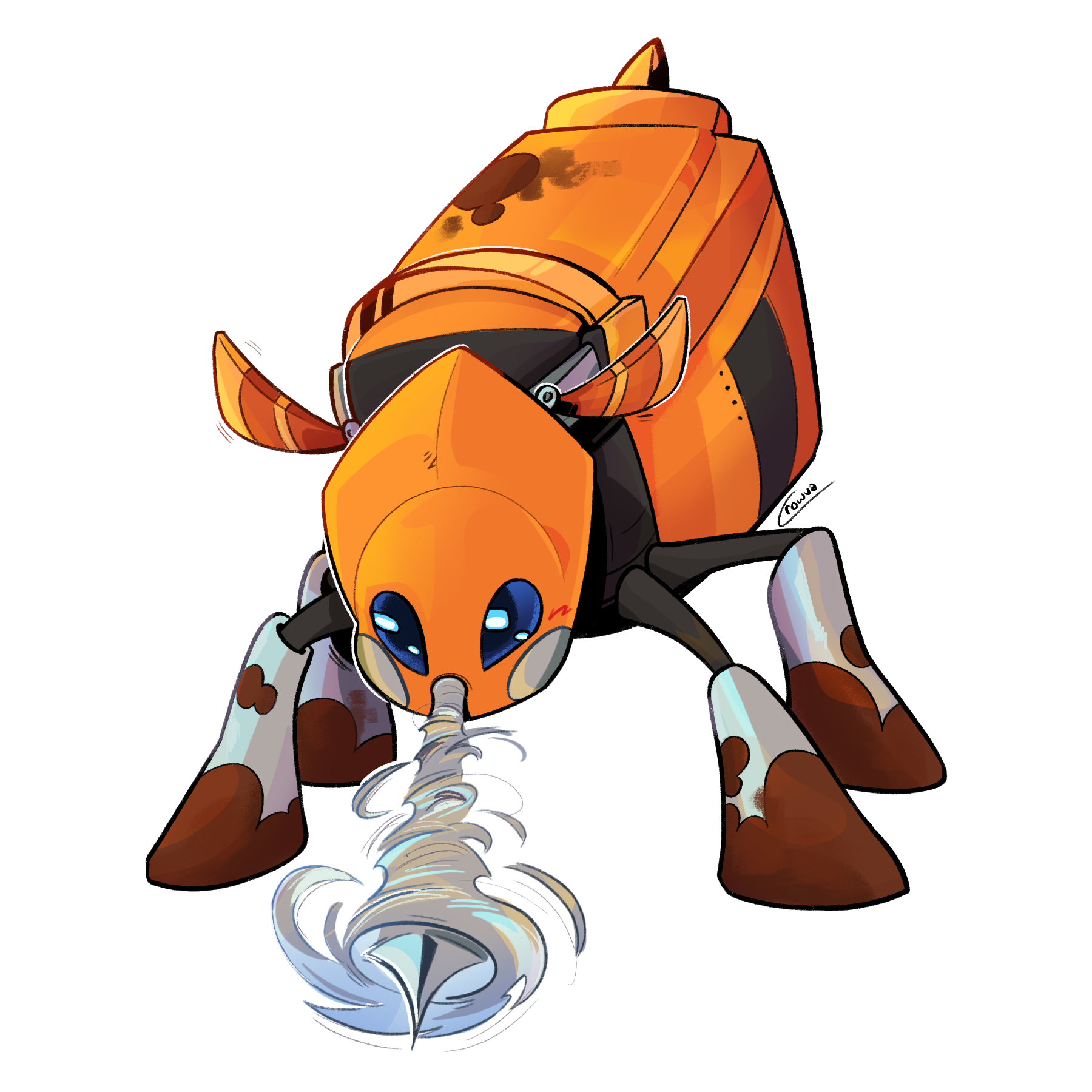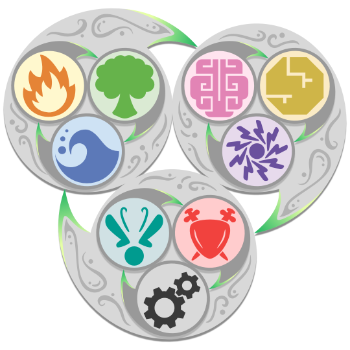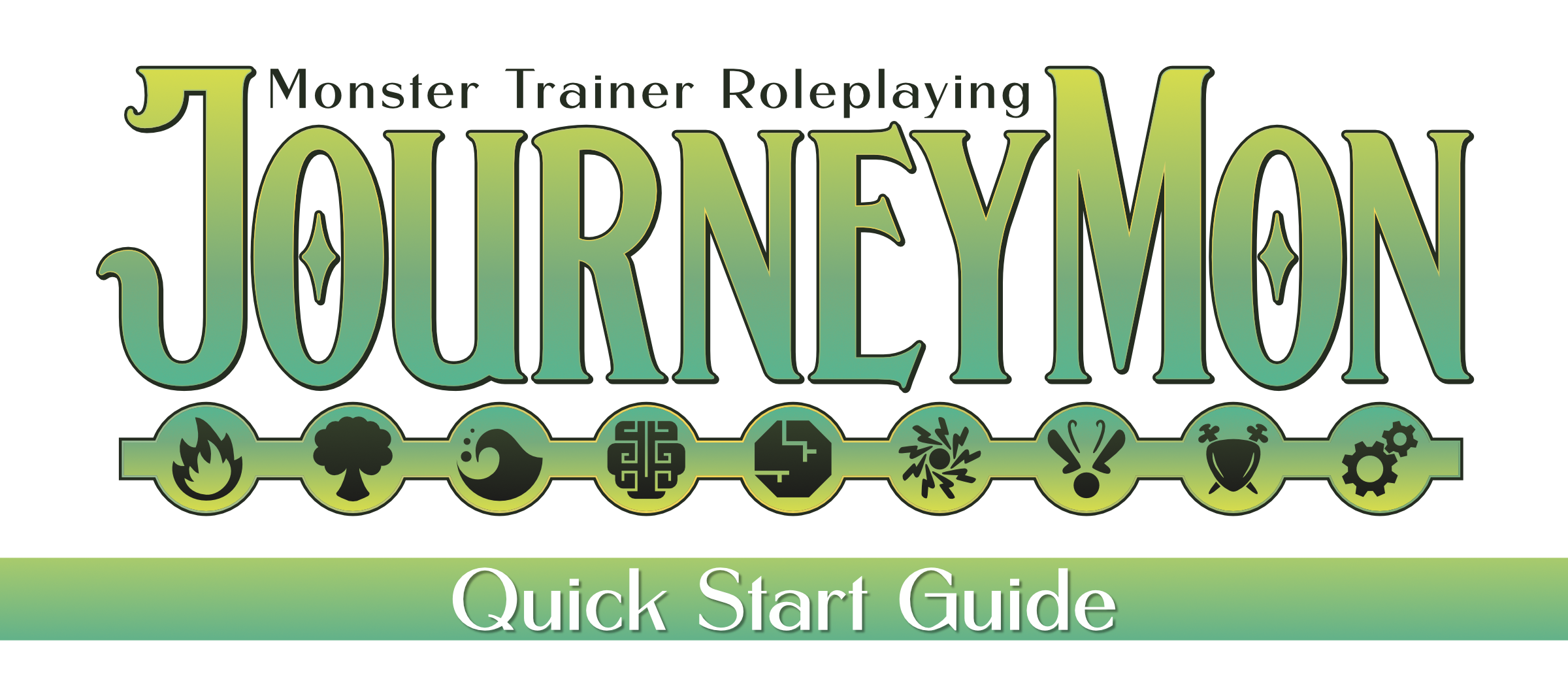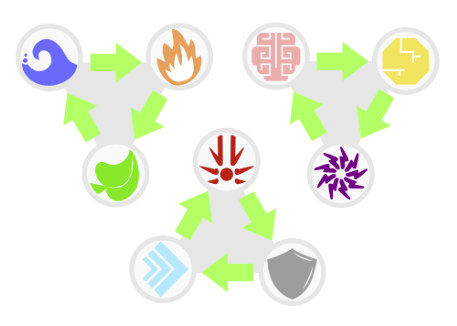JourneyMon Devlog #2: Designing a Type Chart
JourneyMon is coming soon to
 Follow the campaign here!
Follow the campaign here!
Designing a Type Chart
Almost all monster taming/monster collecting video games have a "type" system. In those games, certain "types" of monsters like "Fire" or "Psychic" have advantages against a subset of others. The system of advantages and disadvantages might introduce different relationships for offence and defence, it might have asymmetric relationships, or it might even confer even immunities. In many video game explorations of this genre, there are many types with a complex web of interactions that take dozens of hours of gameplay to learn and master. Pokemon is the classic example here, of course, with its 18 types and complex web of interactions.
These systems tend to work pretty well in video games. The software can tell you whether Rock is "super effective" against Ice or vice versa via in-game prompts. However, in TTRPGs they introduce a major hurdle. All of those relationships and calculations have to be remembered and performed by human players.
But we almost have to include a type chart to hit the genre tropes we're aiming for. JourneyMon can't be the exception there. So how do we do it?

Weedrill, a Machine type monster, by Juno "Crowva" Kurtin
Axioms
When designing the type chart for this game, I started with the following (almost) non-negotiable design goals:
- Fire/Water/Nature. The type chart should feature the classic Fire > Water > Nature triangle. There's a reason this is the very first type interaction players are introduced to at the start of Pokemon games, serving as a sort of tutorial. The relationships are intuitive, and the rock-paper-scissors format is as simple as it gets while also leaving a bit of strategic thought.
- Simplicity. The entire type chart should be simple enough to read and understand that players can pick it up during a one shot game. Additionally, any handout should be easy enough to read at a distance, such as if its on the other side of the table or on the player-facing side of the GM screen.
- No Null Types. To keep things dynamic, all monsters should have a type! No "Normal", "Blank" or "Typeless" options should be available. Force players to pick a side!
- Broad Types. Each type should be able to support a wide variety of monster concepts. They should also be able to be combined with others in interesting and intuitive ways.
That's pretty much it! Onwards to the drafting!
First Drafts - Making Mayhem
Naturally, the type chart for JourneyMon evolved during the design process, but many of the ideas from the first draft are still present in the final game. The first principle I adopted at this stage was that "rock-paper-scissors" should be the rule for all type interactions in this game. After all, if everything is organised into these triangles, it's that much easier to remember how type interactions go at the table. With that in mind, that game sprung into existence with two "rock-paper-scissors" cycles consisting of six different types:
- Fire monsters can create and control flames, heat, and light.
- Nature monsters are masters of life, plants, and the untamed wilds.
- Water monsters can shape and create water, ice, or even acid. Many are aquatic.
- Mind monsters embody intellect, psychic power, or spirituality.
- Matter monsters are solid, grounded, and strong. They are often associated with earth or physical fighting.
- Mayhem monsters represent chaos and unconstrained power. They are often associated with storms, dark magic, or ghosts.
Fire beats Nature. Nature beats Water. Water beats Fire.
Mind over Matter. Mattter over Mayhem. Mayhem over Mind.
Mind type was a very familiar touchstone for genre fans, while Matter could do the job of covering the broad field of elemental earth, ground and rocks. And then there's Mayhem, a type that could cover chaos and spooky things as well as lighting and storms. The Mayhem type would be an early hit with playtesters too, as it's quite clearly different from expectations set by other games, while also being easy to 'get' at first glance. It's exciting! A hook!
And so, our type chart was starting to take shape graphically as follows:
Yes, this is the simple graphic that lived in my draft files for a few months!
Cutting Room Floor - Styles as Types
Hawk-eyed readers will notice there are three symbols in the above type chart that don't correspond to the six types I mentioned in the previous section. These represent to an idea I tried relatively early on in JourneyMon's development: "Styles".
There were three "Styles" that monsters could have: Quick, Tough, and Blaster.
- Tough represents steadfast, hardy monsters that can resist attacks or throw their weight around.
- Blaster represents monsters who attack with magic or ranged attacks from a distance.
- Quick represents monsters who count speed as their greatest asset.
The idea with these style types was to give more gameplay impact to the body type or fighting style of a monster in a system that otherwise folds monster power into one number (their Mon score). A turtle-like monster could be Water and Tough types, while an ember-spitting salamander might be Fire and Blaster types.
I played around with this idea for a while, even trying to replace Blaster with a Cunning style to represent smart and tactical monsters. However, we ran into a major snag with this design: playtesters couldn't agree which way round the triangle should go! I ended up running a poll on Twitter, and after nearly 100 votes the jury was still out:

If this were more like 80% in favour of one result, I might have made only minor adjustments. Instead, it was time to go back to the drawing board!
Final Chart - Triple Triad?!
While I could have removed the three style types and pressed on with only six types (Fire, Nature, Water, Mind, Matter, Mayhem), I thought the type chart was looking too sparse. It did cover a lot of concepts for monsters, but I felt that gameplay involving searching for advantages and disadvantages based on types would be more rewarding if there were slightly more.
The obvious choice was to add a third rock-paper-scissors triad, and I settled on Fey, Heroic and Machine types.
- Fey monsters cherish mischief, trickery, and illusion.
- Heroic monsters strive for the ideals of self-sacrifice, honor, and bravery.
- Machine monsters embody metal, machinery, and precision.
Fey beats Heroic. Heroic beats Machine. Machine beats Fey.
Again, we had here a cycle where enough of the interactions were intiuitive to players: Fairies trick and manipulate the heroes in stories, and are weak to cold iron (machines).
Like the Mayhem type, the Heroic type is a more unusual type in that it doesn't correspond so cleanly to an element, energy, or mythological being. However, the theme of self-sacrifice and bravery opened up a lot of interesting design space for monster powers (which I'll discuss in a later article). It's probably the least broad of the nine types, so stretched one of our axioms a bit. However, in workshopping it we managed to figure out quite a wide variety of Heroic type monsters. In fact, two iconic monsters are Heroic type: our iconic Ace has Knightowl flying by her side, and our iconic Ideologue villain Sidra, Commander of the Knights Cosmos, is joined by the fanatic Gazealot.
The final piece of the puzzle that locked everything into place was that realisation that since we now have three triads, we could make each of them strong against one of the other triads. That opened up a lot of extra design space, too, as these interactions would tend to generate more advantages and disadvantages on rolls involving monsters. More dice means more numbers to play with! To package the idea up in a neat bow, we gave the type triads each a "Theme".
- Types of the World: Fire, Nature and Water are the elemental forces that make up the physical world.
- Types of the Spirit: Mind, Matter and Mayhem are philosophies, practices, and states of being.
- Types of the Story: Fey, Heroic and Machine are the kinds of characters that make up myth and legend.
The types of the World lay the foundation for the Spirit (World beats Spirit). The types of the Spirit conjure Story with imagination and energy (Spirit beats Story). The types of the Story can create new worlds themselves (Story beats World).
The final version of the type chart, a nested rock-paper-scissors cycle, fell into place!

And the best part is, the entire system of interactions is small enough to fit onto a very readable quick reference sheet!
Still To Come
Each of the 9 types has a distinct mechanical identity related to their themes, and you can probably guess a couple of them! I'll discuss those in a future devlog about Monster Powers.
I hope you enjoyed this dive into the design process, and remember to sign up for to be notified about the release of the full JourneyMon game on our Kickstarter pre-launch page.
Get JourneyMon Quick Start Guide
JourneyMon Quick Start Guide
Monster trainer tabletop roleplaying with collaborative world-building.
| Status | In development |
| Category | Physical game |
| Author | Imogen Gingell |
| Genre | Role Playing |
| Tags | Anime, Monsters, PbtA, Tabletop role-playing game |
More posts
- JourneyMon is LIVE on Kickstarter!19 days ago
- JourneyMon Devlog #6 - Building Mechanical Identities33 days ago
- JourneyMon Launch Date & Villain Preview40 days ago
- JourneyMon Quick Start Booster Packs Out Now!53 days ago
- JourneyMon Devlog #5 - Kill Your Darlings (with Playtests!)75 days ago
- JourneyMon Quick Start Guide - v1.1 Bug Fix81 days ago
- JourneyMon Devlog #4: Is JourneyMon PbtA?89 days ago
- JourneyMon Devlog #3: Seasons of Adventure - Journey MovesAug 05, 2025
- Starting our Journey(Mon)Jul 15, 2025


Leave a comment
Log in with itch.io to leave a comment.